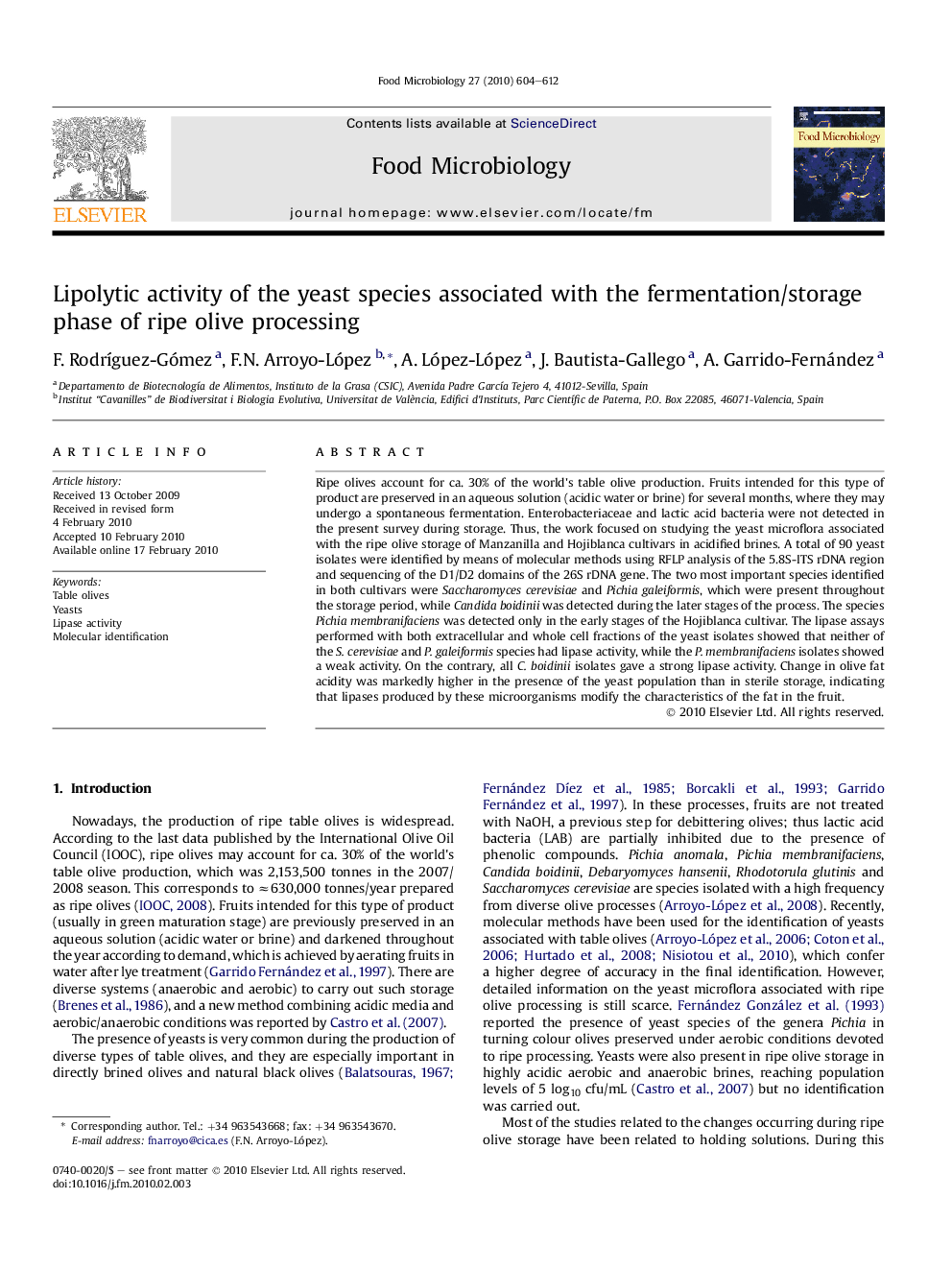| Article ID | Journal | Published Year | Pages | File Type |
|---|---|---|---|---|
| 4363302 | Food Microbiology | 2010 | 9 Pages |
Ripe olives account for ca. 30% of the world's table olive production. Fruits intended for this type of product are preserved in an aqueous solution (acidic water or brine) for several months, where they may undergo a spontaneous fermentation. Enterobacteriaceae and lactic acid bacteria were not detected in the present survey during storage. Thus, the work focused on studying the yeast microflora associated with the ripe olive storage of Manzanilla and Hojiblanca cultivars in acidified brines. A total of 90 yeast isolates were identified by means of molecular methods using RFLP analysis of the 5.8S-ITS rDNA region and sequencing of the D1/D2 domains of the 26S rDNA gene. The two most important species identified in both cultivars were Saccharomyces cerevisiae and Pichia galeiformis, which were present throughout the storage period, while Candida boidinii was detected during the later stages of the process. The species Pichia membranifaciens was detected only in the early stages of the Hojiblanca cultivar. The lipase assays performed with both extracellular and whole cell fractions of the yeast isolates showed that neither of the S. cerevisiae and P. galeiformis species had lipase activity, while the P. membranifaciens isolates showed a weak activity. On the contrary, all C. boidinii isolates gave a strong lipase activity. Change in olive fat acidity was markedly higher in the presence of the yeast population than in sterile storage, indicating that lipases produced by these microorganisms modify the characteristics of the fat in the fruit.
